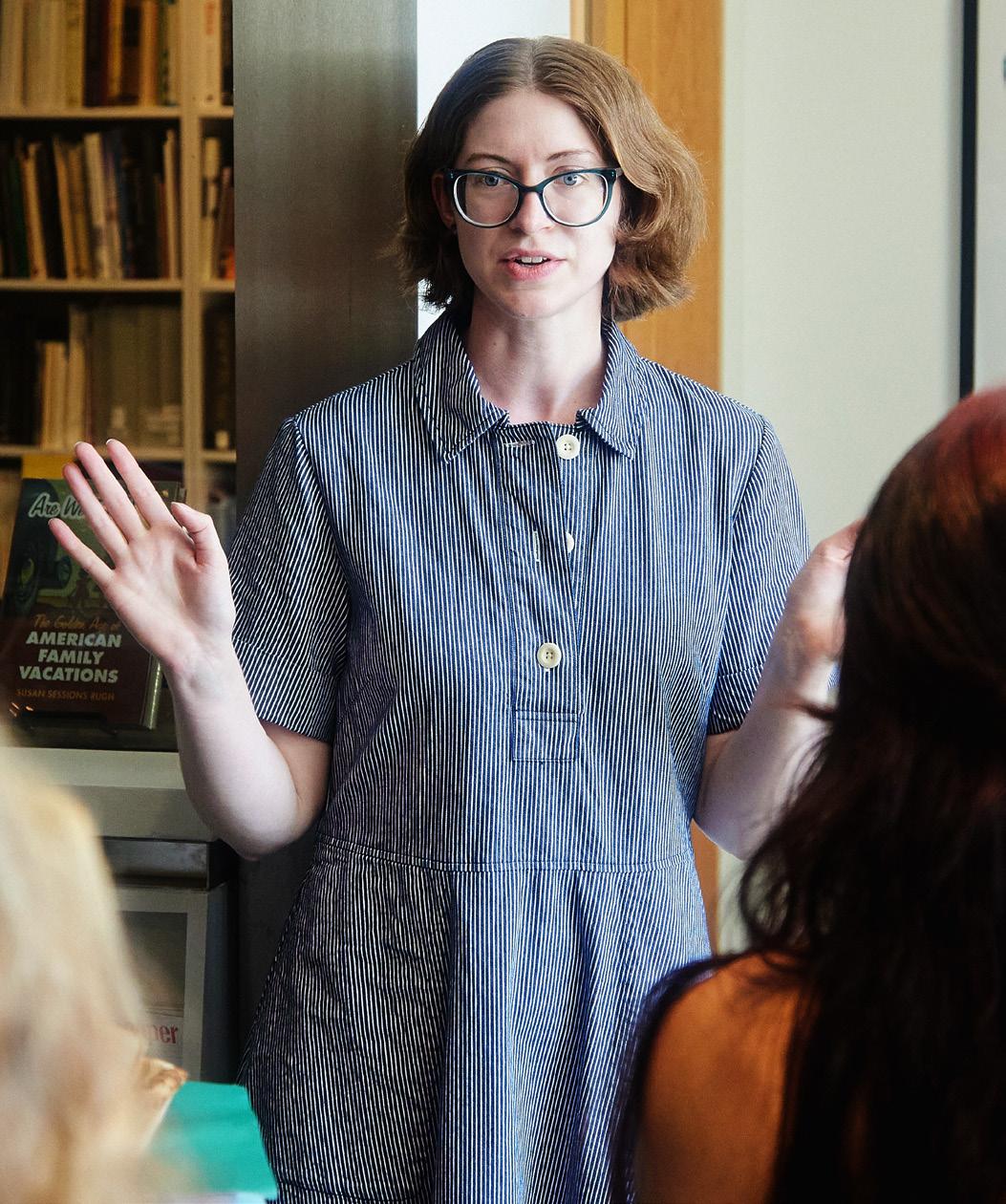
2 minute read
Department of Research Collections
The Bard Graduate Center Department of Research Collections comprises the library, Study Collection, and the institutional archives, representing a comprehensive range of diverse research resources across all media in support of the advanced scholarly study of material culture. Bringing these three entities together aligns the institution’s collection with its approach to research, which challenges traditional boundaries, centers the object, and emphasizes interdisciplinarity.
In the 2022–23 academic year, Heather Topcik and the Department of Research Collections at Bard Graduate Center made important advances in their efforts to bring all BGC holdings together into one research environment. Their top priority was integrating objects from the BGC Study Collection into the institution’s bespoke catalog, FOLIO. This allows objects in the collection to be discovered along with books and articles on the same topic. For example, a FOLIO search for the term “majolica” now returns 391 books, journals, pamphlets, qualifying papers, dissertations, and videos; 7,680 articles aggregated from hundreds of scholarly databases; and nineteen images of objects in BGC’s Study Collection. Students or faculty members who want to use the objects that show up in a search can come to the library’s reference desk or make an appointment with Barb Elam, digital collections metadata librarian and Study Collection manager.
Advertisement
Topcik doesn’t know of another library that is doing this kind of integration in quite the same way. She said, “I see this as a very unique approach to collections, as a kind of materials library that is fully integrated with our more traditional research materials: the books, periodicals and databases.” The ability to take this approach is one of the things she loves about BGC’s scale. According to Topcik, “There are pros and cons to being a small place. One of the pros is that you can take a project like this and figure it out. There has been a lot of growth and activity in the Study Collection as we have accessioned new objects and installed shelving that allows for small pop-up exhibitions in a laboratory style. Faculty have also begun using the Collection more and more for teaching.”
Mike Satalof, BGC’s archivist and digital preservation specialist, has made significant progress over the course of the past year in processing the exhibition archives of BGC curators, such as the materials that founder and director Susan Weber gathered in the research phase for her exhibition John Lockwood Kipling: Arts & Crafts in the Punjab and London. Topcik described Satalof’s work as a collaboration with the curators to determine the best way of making their materials useful. She explained, “By working directly with curators on the archival process, Mike is able to implement best practices in terms of preservation and make sure that valuable resources are surfaced for future researchers.” In addition, Satalof and BGC’s content manager Maggie Walter are working to present a comprehensive history of the institution’s exhibitions on its website. So far they have added descriptions and photographs to the individual web pages for many of BGC’s early exhibitions, and soon they will add checklists and press clippings as well. Topcik envisions a time when the BGC Archives will also return results in a Folio search.
It has been a year of exponential growth for BGC’s Department of Research Collections, and several new projects on the horizon for the coming year promise to further deepen the value of this priceless resource to the institution’s scholars and students.











